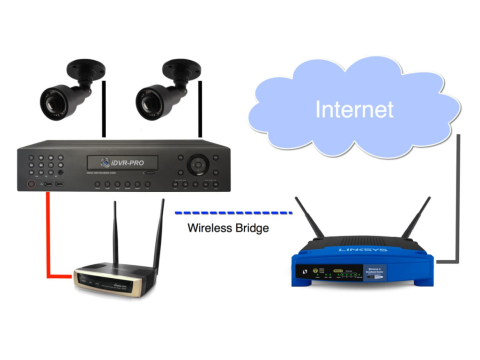How to Connect a Surveillance Camera to the Internet
Setting up your surveillance camera for internet connectivity allows for remote monitoring and video access. Depending on the type of camera and internet connection available, the setup process may require additional equipment.
Required Equipment for Internet Connection
- Router (mandatory for all setups).
- IP Camera (direct connection to router).
- Analog Cameras (require DVR or video capture device).
- PoE Injector/Switch (for Power over Ethernet setups).
- 4G Router (for wireless setups in remote locations).
Steps to Connect a Camera to the Internet
1. Connecting IP Cameras
- Wired Connection: Use an Ethernet cable to connect the camera to the router. Configure the camera's IP settings via its web interface.
- Wireless Connection: Initially, connect the camera to the router via Ethernet. Use the web interface to configure WiFi settings (SSID, password). Once done, the camera can operate wirelessly.
2. Using Analog Cameras
- Analog cameras must be connected to a DVR.
- The DVR is then linked to the internet via the router.
- Use the DVR’s settings to enable remote access.
Accessing Cameras Remotely
Static IP Address:
- Assign a static IP address to the camera/DVR.
- Configure port forwarding in the router for external access.
Dynamic DNS (DDNS):
- For setups without static IPs, use DDNS services like DynDNS.
- Set up the router and camera to sync with the DDNS account.
Cloud Services:
- Some cameras offer cloud integration for hassle-free setup.
- Use the manufacturer’s app or platform to access feeds remotely.
Internet Connection Options
1. Wired Connection
- Best for reliability and speed.
- Simply connect the camera to the router via Ethernet.
2. Wireless Connection (WiFi)
- Ideal for areas with existing WiFi infrastructure.
- Ensure strong signal strength and minimal interference for optimal performance.
3. 4G/Cellular Internet
- Suitable for remote areas lacking traditional internet access.
- Requires a 4G-enabled router and possibly an external antenna for better signal reception.
Connecting Multiple Cameras
For Wired Cameras:
- Use a network switch to expand available Ethernet ports.
For WiFi Cameras:
- Ensure the router can handle the bandwidth requirements of multiple video streams.
For Analog Systems:
- Connect all cameras to a DVR, which in turn connects to the router.
Conclusion
By following these steps, you can connect your surveillance cameras to the internet and enjoy remote access and monitoring. Choose the method that best suits your needs, whether it's a wired, wireless, or 4G connection.
Connecting an Analog Camera to a DVR
11/01/2025

